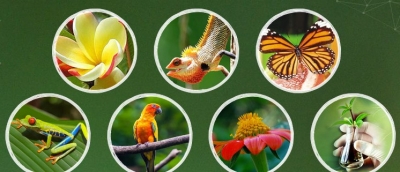What come first-plant or animal?

From time immemorial, the question of how this Universe came to be has haunted Man’s mind. While ancient Man chose to believe in the easiest answer that everything came into existence-through an act of God, modern science persisted with rational enquiries that proved otherwise. Have you ever wondered what it must have been like millions and millions of years ago, when the earth first came into existence? Were there plants and animals then?
When the earth was first formed, there was no life on it. Its surface was extremely hot and had giant volcanoes that threw fiery rocks, dust, and gases into the air. Scientists estimate that the first life forms on Earth were primitive, single-celled organisms. They must have appeared about three billion years ago in the oceans. They had no bones or shells, so they looked more like worms and jellyfish. These one-celled organisms gradually became multi-cellular organisms. As time passed, more complex forms of life began to fill up oceans. One of the first forms of life was a very simple plant called algae. Different types of plants came later on. And so, yes, animal life appeared only after the appearance of plant life.





